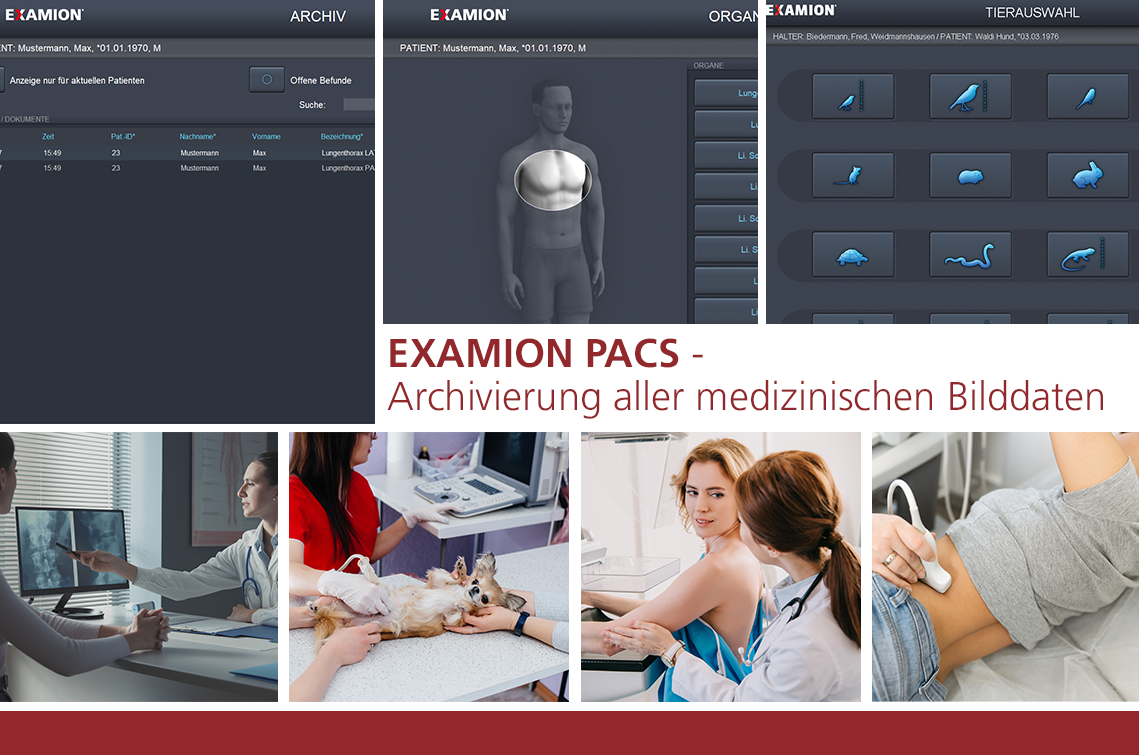PACS – From Image Archive to Communication Platform
Today, a PACS (Picture Archiving and Communication System) can do much more than just store and provide digital X-ray images. Rather, it serves as a cross-departmental communication platform for all kinds of image data information.
The ongoing digitization of hospitals and clinics is creating a steadily increasing flood of data. In the past and today, most of the data comes from radiology. This is why a PACS traditionally is still a radiology project. Increasingly, however, the boundaries between the individual specialties are becoming blurred in hospitals. This is evident not least by the fact that image data is no longer generated solely in radiology. For example, it has become necessary to integrate recording and video signals from other image sources such as sonography, endoscopy or photo and video cameras, e.g. for wound documentation or from the operating room.
Therefore, new strategies for dealing with data are required. One of these is the so-called Vendor Neutral Archive (VNA) consolidating data from different clinical systems which can also come from different manufacturers into one platform. In order to be usable in the long run, the archive must be arbitrarily scalable and designed for an unlimited number of image files. Synchronization between different locations as well as mobile and stationary archives enables location-independent work.
An integrated universal viewer with an intuitive user interface not only ensures that images are displayed correctly on all terminals, it also offers additional options for physicians. For example, radiologists will find extensive editing functions and diagnostic tools, they can measure distances and circumferences and are supported with guided measurement functions such as Cobb, Ulmann-Sharp and Wiberg angles. For sectional viewing, the viewer provides numerous variations for displaying section lines and navigating sections: it includes configurable displays of scouts and localizers, and enables multiplanar reconstructions. The Universal Viewer can also display photos, videos and other documents in single images and image series, as well as documents page by page.
This also shows the following: Hospitals in which a VNA is regarded solely as a storage system are not taking full advantage of this hospital-wide image database. Rather, it opens the door for the facilities to use integrated diagnostics, it facilitates multidisciplinary consultations, it supports clinical treatment pathways through digital workflows, and finally it creates a pool for Big Data analytics. And best of all: The data is available to all authorized users, regardless of their department.
A modern system is characterized by a web client that can be accessed with all common browsers using the latest HTML5 technology. Since the look and feel is identical to the familiar PC interface, users do not have to get used to anything new. It can access image data from any web-enabled end device, such as iMac, iPad and other tablet PCs. This makes the system ideally suited for the integrated connection of home offices, affiliated clinics and operating rooms.
It obviously is truly contemporary – just like our X-AQS for medical or veterinarian users.
